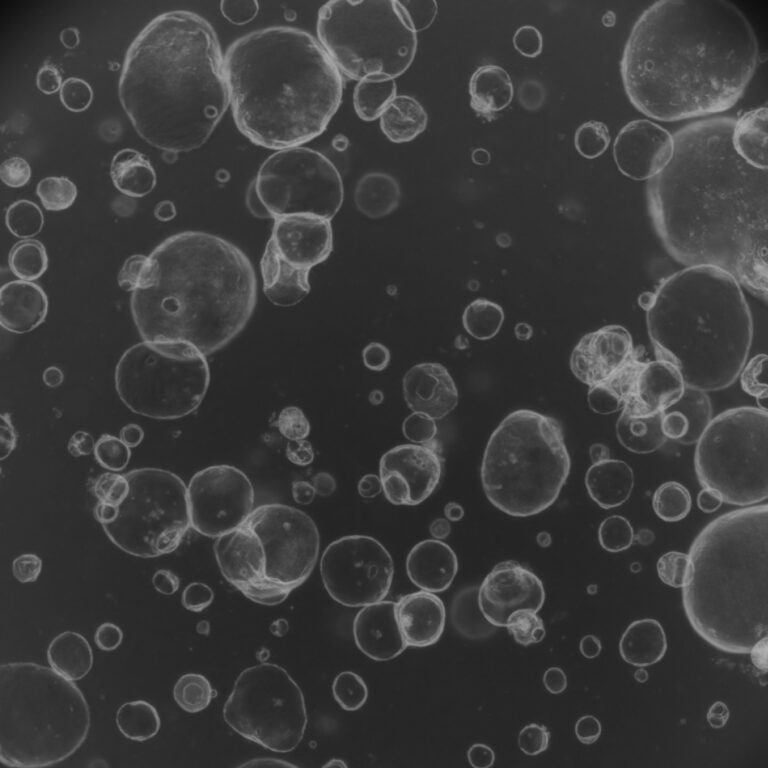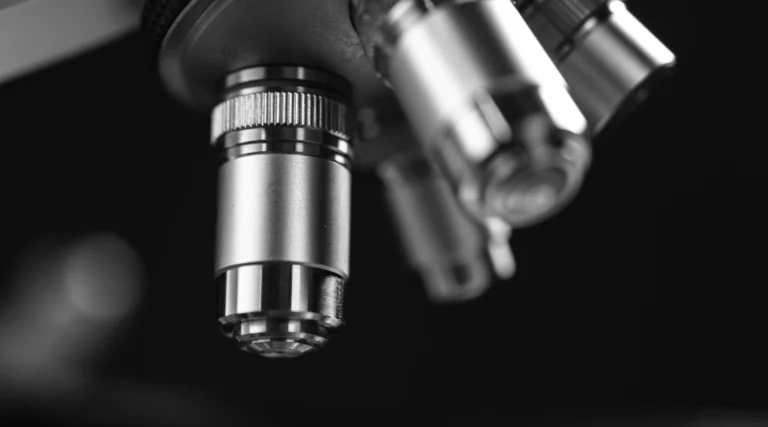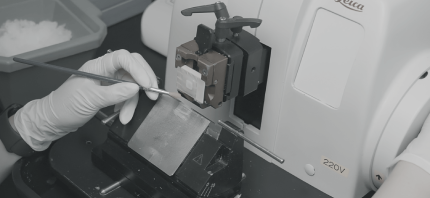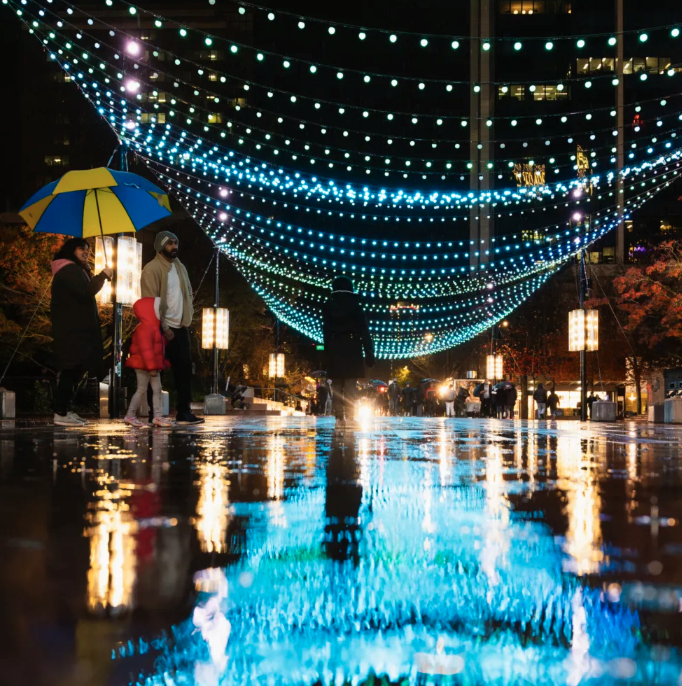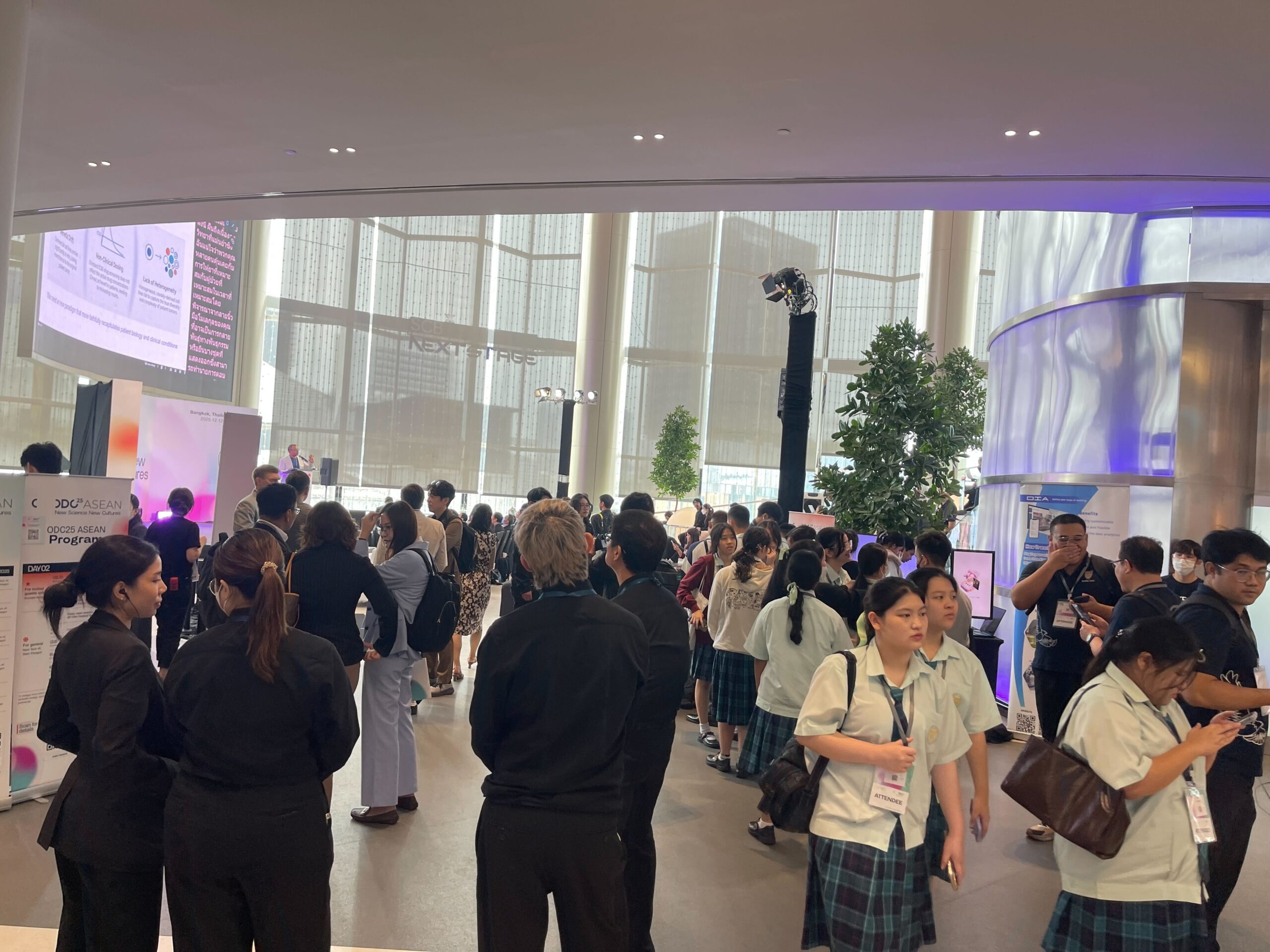Can neurons in a dish create art? Two recent projects suggest that brain organoids – tiny clusters of human neurons grown from stem cells – can act as unusual collaborators in creative practice.
At the Art Gallery of Western Australia, Revivification reimagines the work of late composer Alvin Lucier. Before his death in 2021, Lucier donated blood that was transformed into stem cells and grown into brain organoids. Their electrical activity now drives an installation of 20 brass plates, generating resonant tones that evolve in real time with the gallery’s ambient sound. The result is a feedback loop between neural tissue, space, and audience – raising questions about identity, presence, and the persistence of creativity after death.
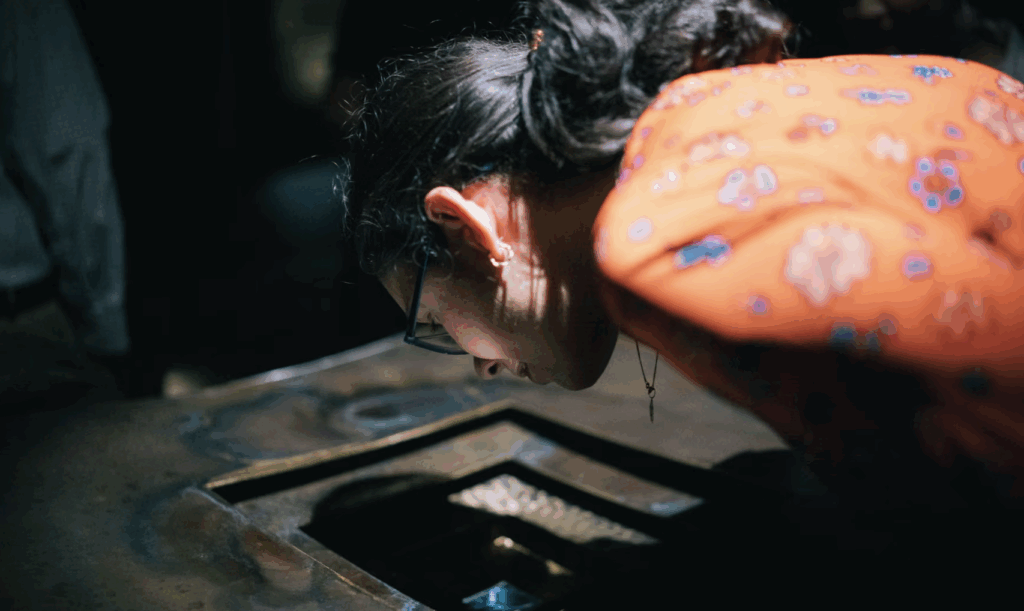
Image: The Guardian; ‘You’re peering down into the abyss’: the central plinth of Revivification, which houses the lab-grown ‘mini-brain’ of Lucier. Photograph: Rift Photography
Meanwhile, the project Simulacra Naturae (Sept 2025) explores neural rhythms as co-creative forces. Instead of live tissue, it uses recorded spike data from organoids to drive simulations of termite swarms, slime molds, and flocking dynamics. These rhythms shape visuals, soundscapes, and even ceramic instruments among living plants in a large immersive installation.
Neither project suggests organoids are conscious or “composing.” Instead, they ask: Can raw biological activity be framed as art? Who – or what – counts as an author? And how does blending living tissue with sound and sculpture reshape our cultural imagination of biotechnology? In positioning organoids as partners rather than subjects, these works reveal a provocative frontier: neural life as both medium and co-creator.
Read more:
